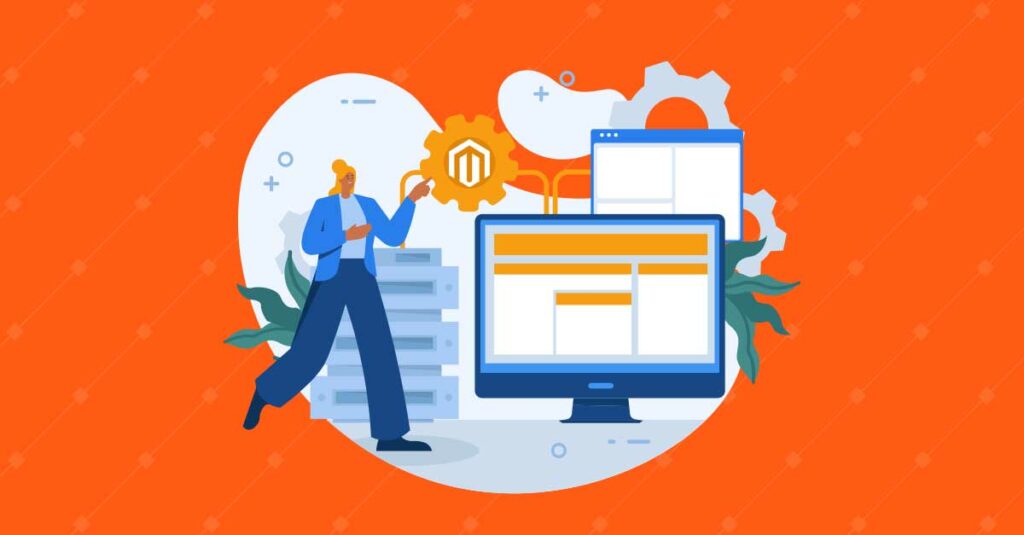Headless Commerce Platform
As we move closer to the 2021 Holiday season, everyone expects eCommerce to increase dramatically this year. According to Oberlo, an estimated 2 billion consumers are expected to make online purchases this year alone.
Adding to that, we are seeing more online shopping happening outside the traditional mediums and touching innovative new ways, including customer touchpoints like Progressive web apps (or PWAs) and Internet-of-Things (IoT) devices.
This poses a challenge for eCommerce platforms with a traditional approach towards online retail. Are they flexible enough to adopt the newer touchpoints? For the 2021 holiday season, eCommerce companies must be able to predict changing customer behavior in the post-pandemic economy. An effective holiday preparedness strategy can go a long way in improving the customer experience and supercharge your online sales this season.
How can a Headless Commerce platform help in preparing eCommerce retailers for the upcoming holiday season? Let’s look.
Deploying Headless Commerce in 2021
Cut to a couple of years ago and most eCommerce sales were happening on computers and some on mobile phones. Starting from 2020, we find the shift towards the omnichannel shopping experience. Apart from their mobile phones, consumers are shopping on social networking platforms, online marketplaces like Google Shopping, and through their IoT devices like smartwatches.
With online retail brands looking to connect all these customer touchpoints, headless commerce is emerging as a powerful solution towards providing a unified (or omnichannel) commerce platform.
One such recent success story is that of K2 Sports that works towards “creating unforgettable experiences for outdoor sports enthusiasts.” To deliver an exceptional shopping experience, the brand moved from its “traditional” monolithic architecture to a SaaS-driven headless setup. The outcome? The launch of eight sports brands and sixteen websites (within 9 months).
As stated by Dirk Hoerig of commercetools, a “headless eCommerce platform gives companies the full potential of online retail without the boundaries to specific touchpoints.”
Are all the headless commerce platforms the same? Not really, here’s a look at the 5 features (or capabilities) to look out for in a headless commerce platform.
Top 5 Features of a Headless Commerce Platform
How does headless commerce differentiate itself from traditional eCommerce frameworks? Here are the top 5 features or capabilities to look out for:
1. Flexible frontend development
As the name suggests, headless commerce removes the “head” component – thus separating the frontend (or product) from the backend (or content). Traditionally, both frontend and backend commerce were managed using the same tool, which limited its delivery and layouts.
With headless commerce, frontend developers can now focus on creating a unique user experience that works for their core business objectives. The headless architecture also provides flexibility in delivering content, as the backend can be coupled with any supported technologies including Content Management Systems (CMS), Direct Experience Platforms (DXP), IoT, and more.
With this feature, frontend developers are now “set free” from the constraints involved in traditional commerce models.
2. Smooth Backend integration using APIs
One key value that headless commerce solutions are driving is the ability to make the backend platform more robust and inherently able to address many more API calls. In other words, headless has great synergy with the backend processes, which makes information available to the frontend through commerce APIs. This includes integration with backend components like the infrastructure, pricing & payment systems, and security systems.
With the headless commerce architecture, APIs can be used to pull information anywhere – including technology-enabled wearable devices, Internet kiosks, third-party apps, and more.
With less requirement for backend development, headless platforms are the best fit for open database systems as they can be queried easily. Plus, frontend developers can retrieve database information using Angular or React frameworks. Backend APIs also reduce the dependence on web developers for making content or layout changes.
3. Content Management System (CMS)
By decoupling or separating the eCommerce platform from the frontend presentation layer, online retailers can now use the content management system or CMS tools (like WordPress or Drupal) of their choice. While the backend database can simply be used to store product content and images, the headless CMS architecture allows developers to customize the frontend component in “quick time” and how they want it to appear to shoppers.
Be it a major frontend change (like modifying the checkout process) or a small change (like adding a field to the customer form), both can be executed easily with the headless architecture.
With this flexibility, eCommerce retailers can deploy a headless architecture to deliver frontend content in any theme (or template) that enriches the end-user experience.
4. Optimized Digital Experience (DX)
An optimized digital experience can build lifetime value to the customer through brand loyalty and higher demand. Headless commerce platforms make it easier for eCommerce brands to deliver a superior DX using customized solutions and cutting-edge technologies.
A Digital Experience Platform (or DXP) can be integrated with the headless architecture for a quicker digital transformation and improved customer experience. On its part, an efficient DXP can be used to build, deploy, and improve customer portals, mobile apps, websites, and a whole lot of other touchpoints.
By integrating DXP with eCommerce functionality, headless commerce solutions can power a truly omnichannel customer experience across all touchpoints.
Are you looking for a data driven agency?
Let’s see if we’re a good fit! Contact us
5. Progressive Web Apps (PWA)
Adopted by reputed brands like Airbnb and Starbucks, progressive web apps (PWAs) have largely been successful in providing an immersive experience to users – thus leading to higher conversions. Various eCommerce experts are projecting PWAs as the “future of eCommerce.” With integrated PWAs, users can interact with eCommerce applications much like any native (or device-specific) application.
By separating the frontend from the backend using the headless architecture, online retailers can leverage PWA features like micro-interactions and personalization – without slowing the eCommerce app or disrupting any transaction. PWA integration can also enhance cybersecurity by serving content through secure protocols like HTTPS.
Conclusion
Over the past decade, the eCommerce industry has evolved with more technologies and consumers making purchases through multiple channels. The growing number of customer devices and touchpoints means that eCommerce retailers need a flexible and decoupled architecture – that is enabled by headless commerce.
With its focus on the growing eCommerce sector, Ignitiv is revolutionizing the B2B and B2C sectors with powerful eCommerce strategies including those that tap headless architecture. How can you use PWA Headless solutions to foolproof your eCommerce business? Download our white paper today.







